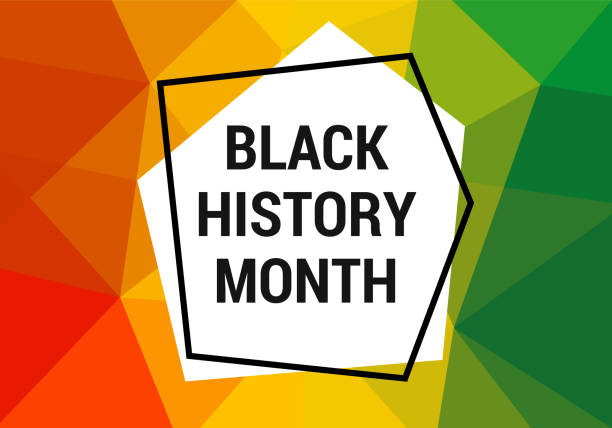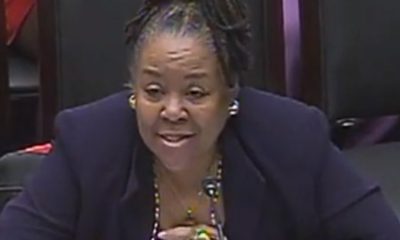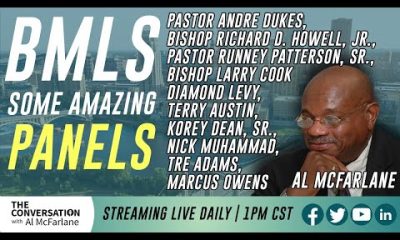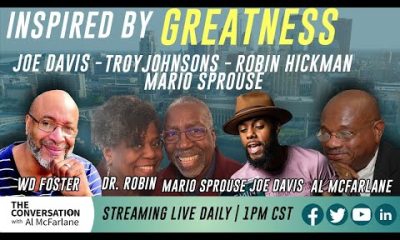Black History
Black History Month: Let’s Self-Reflect, Self-Educate
In that light, Black History Month 2021 is a perfect time for self-reflection. As a people, where have we been? Where are we are now? Where we are going?

A rebirth of social awareness, one that gave overdue voice to centuries of injustice and brutality via numerous social protests and social activists demanding change and reform in the treatment of people of color, exploded in the year 2020.
In that light, Black History Month 2021 is a perfect time for self-reflection. As a people, where have we been? Where are we are now? Where we are going?
Our history has served as a catalyst for several of our life decisions, many of them made as a result of lack of knowledge. Sadly, many have accepted ‘lack’ as normal and view success as the standard for whites.
Completing college boosted my career options, yet I never considered one as a scientist, oceanographer, senator, judge, microbiologist, corporate executive, banker, superintendent of schools, or owner of a newspaper. Even with an education, there was no roadmap, no guidance to pursue such careers. So I followed the well-trod path to familiar job choices.
By failing to provide our children even a glimpse of the past and present world, we rob them of the most vital part of being a kid: the ability to dream. And that’s unfair to their future.
So what can be done?
We must introduce our Black and Brown children to books that provide information and stories about the contributions and accomplishments of people who look like them. Stories within the pages can catapult their thoughts from ‘lack’ to dreams to success.
During the month of February, I will highlight various books that will enlighten many about the contributions and accomplishments of many Black Americans.
In “Changing the Equation,” author Tonya Bolden explores the lives of more than 50 Black women who changed Science, technology, engineering, and mathematics (STEM) in America.
The biographies include video game developers, aviators, pharmacists, and a founder of a nonprofit organization that encourages Black girls to learn coding. These are women who defied stereotypes and racial discrimination to shatter the glass ceiling and live their dreams.
The stories of more than 150 Blacks who worked in the presidential food service as chefs, personal cooks, and service for first families beginning with George and Martha Washington are spun into compelling stories by Adrian Miller in “The President’s Kitchen Cabinet.” The book opens with a list of Blacks who prepared food for presidents from George Washington’s family to the Obamas.
Many presidents, Miller said, “have realized that if they are likable by the American public, it helps advance their political agenda. So, I think President Obama is a great example because when he would travel, he would often do impromptu stops at burger joints, rib shacks. He loved drinking beer.”
Children ages 8–12 will enjoy traveling through history within the pages of “Black Heroes: A Black History Book for Kids.” They’ll travel to Egypt to meet rulers, spend time with trailblazers in Britain, and learn from scientists in ancient Africa, all before returning to the United States for more. Author Arlisha R. Norwood provides young readers with ideas to further explore through books, websites, and videos.
Activism
Oakland Post: Week of April 24 – 30, 2024
The printed Weekly Edition of the Oakland Post: Week of April 24 – 30, 2024

To enlarge your view of this issue, use the slider, magnifying glass icon or full page icon in the lower right corner of the browser window. ![]()
Activism
Oakland Post: Week of April 17 – 23, 2024
The printed Weekly Edition of the Oakland Post: Week of April 17 – 23, 2024

To enlarge your view of this issue, use the slider, magnifying glass icon or full page icon in the lower right corner of the browser window. ![]()
Black History
Matthew Henson: Explorer Extraordinaire
Matthew Henson, a trailblazing explorer who overcame countless obstacles to leave an incredible mark on history. Born on August 8, 1866, in Charles County, Maryland, his journey is a testament to the power of determination and the spirit of adventure.

By Tamara Shiloh
Matthew Henson, a trailblazing explorer who overcame countless obstacles to leave an incredible mark on history. Born on August 8, 1866, in Charles County, Maryland, his journey is a testament to the power of determination and the spirit of adventure.
Henson’s life began amidst the backdrop of post-Civil War America, where opportunities for African Americans were scarce. From a young age, he possessed an insatiable curiosity about the world beyond his small town. At the age of 12, he embarked on a journey that would change the course of his life forever when he joined a merchant ship as a cabin boy.
His most famous expedition was his journey to the Arctic with renowned explorer Robert E. Peary. In 1887, Henson joined Peary’s crew as a seaman and quickly proved himself to be invaluable with his skills as a navigator and craftsman. Over the course of several expeditions, Matthew endured extreme cold, treacherous terrain, and grueling conditions as he and Peary sought to reach the elusive North Pole.
In 1908–09, Peary set out on his eighth attempt to reach the North Pole. It was a big expedition, with Peary planning to leave supplies along the way. When he and Henson boarded their ship, the Roosevelt, leaving Greenland on August 18, 1909, they were joined by a large group. This included 22 Inuit men, 17 Inuit women, 10 children, 246 dogs, 70 tons of whale meat, blubber from 50 walruses, hunting gear, and tons of coal.
In February, Henson and Peary left their anchored ship at Ellesmere Island’s Cape Sheridan, along with the Inuit men and 130 dogs. They worked together to set up a trail and supplies along the way to the Pole.
Peary picked Henson and four Inuit people to join him in the final push to the Pole. However, before they reached their destination, Peary couldn’t walk anymore and had to ride in a dog sled. He sent Henson ahead to scout the way. In a later interview with a newspaper, Henson recalled being in the lead and realizing they had gone too far. The group turned back, and Henson noticed his footprints helped guide them to their destination. At that location, Henson planted the American flag.
Henson’s legacy extends far beyond his expeditions to the Arctic. He shattered racial barriers in the world of exploration and inspired countless individuals, regardless of race, to dream big and pursue their passions. In 1937, he was finally recognized for his achievements when he was inducted into The Explorers Club, an organization dedicated to promoting scientific exploration and field research.
Matthew Henson died in the Bronx, New York, on March 9, 1955, at the age of 88.
-

 Activism4 weeks ago
Activism4 weeks agoOakland Post: Week of March 27 – April 2, 2024
-

 #NNPA BlackPress4 weeks ago
#NNPA BlackPress4 weeks agoBeloved Actor and Activist Louis Cameron Gossett Jr. Dies at 87
-

 Community1 week ago
Community1 week agoFinancial Assistance Bill for Descendants of Enslaved Persons to Help Them Purchase, Own, or Maintain a Home
-

 Activism3 weeks ago
Activism3 weeks agoOakland Post: Week of April 3 – 6, 2024
-

 Business2 weeks ago
Business2 weeks agoV.P. Kamala Harris: Americans With Criminal Records Will Soon Be Eligible for SBA Loans
-

 Activism2 weeks ago
Activism2 weeks agoOakland Post: Week of April 10 – 16, 2024
-

 Community2 weeks ago
Community2 weeks agoAG Bonta Says Oakland School Leaders Should Comply with State Laws to Avoid ‘Disparate Harm’ When Closing or Merging Schools
-

 Community7 days ago
Community7 days agoOakland WNBA Player to be Inducted Into Hall of Fame

























































